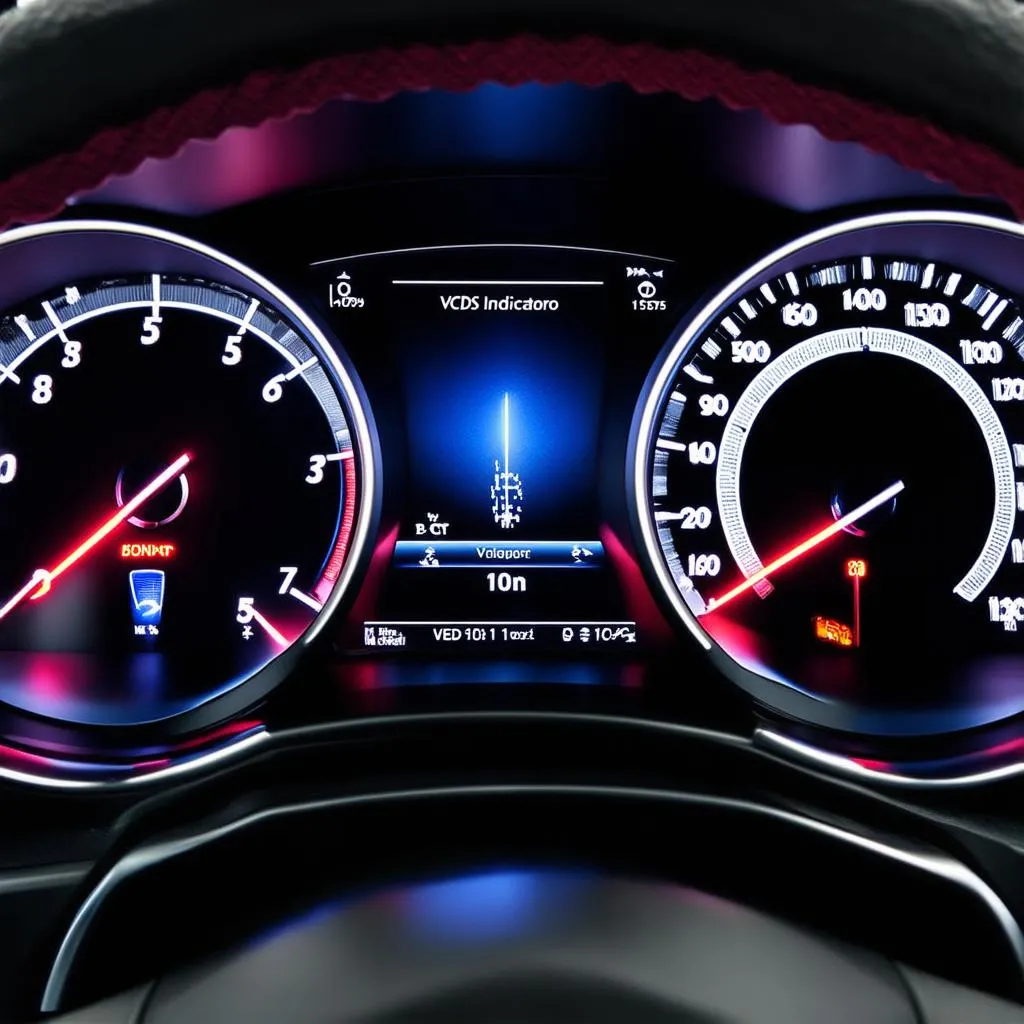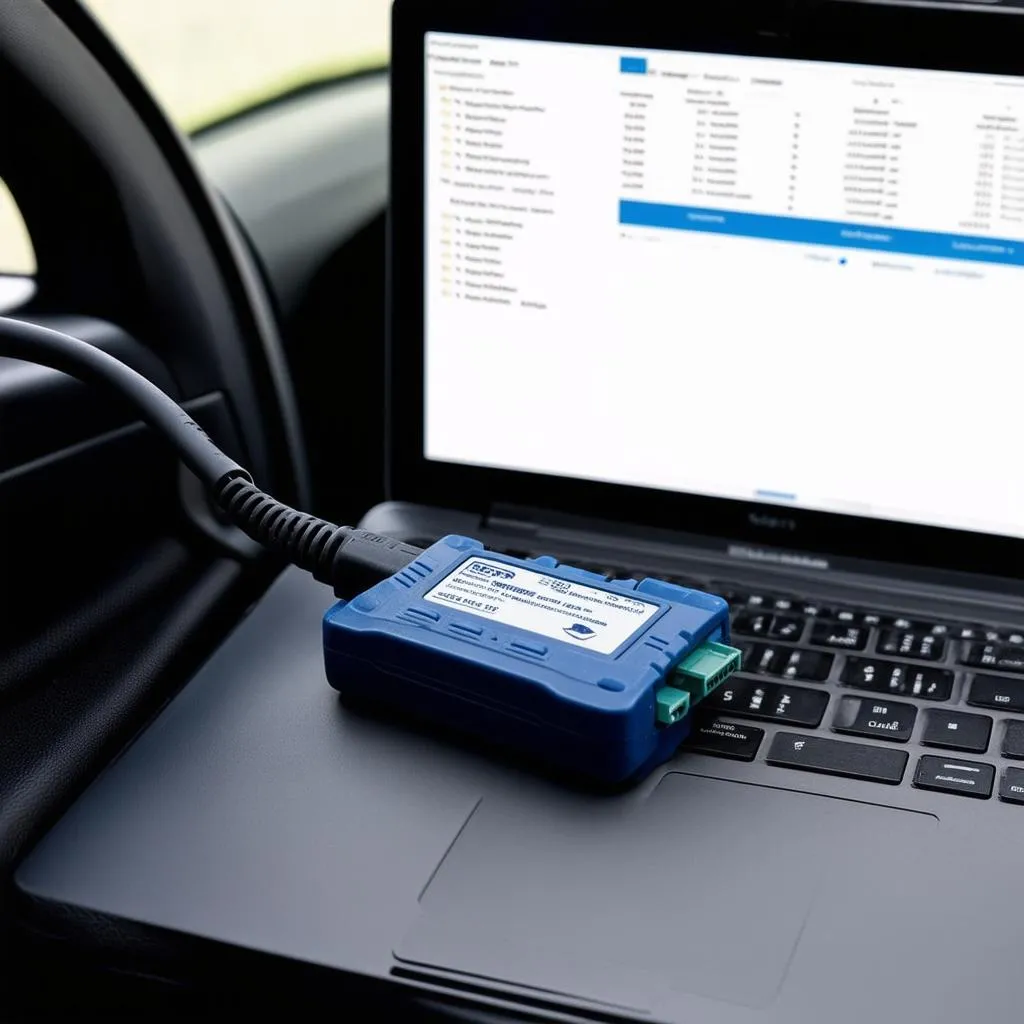The VCDS Indicator Celebration, also known as the “needle sweep,” is a feature loved by many Volkswagen Audi Group (VAG) vehicle owners. It’s a visual treat where your car’s instrument cluster gauges come to life, sweeping through their range and back. This isn’t just a fun animation; it can also be a helpful diagnostic tool.
Understanding the VCDS Indicator Celebration
This function, accessible through the VAG-COM Diagnostic System (VCDS), allows you to command your car’s instrument cluster to perform a full gauge sweep. This involves the speedometer, tachometer, fuel gauge, and temperature gauge all moving to their maximum and then back to their current reading.
Why Use the VCDS Indicator Celebration?
While it might seem like a novelty feature, the Indicator Celebration serves several purposes:
- System Check: It allows you to visually confirm all gauges in the instrument cluster are functioning correctly. This can be helpful after repairs or modifications.
- Visual Appeal: It adds a touch of personalization and flair to your driving experience.
- Diagnostic Aid: For those familiar with VCDS, observing the gauge movement during the sweep can sometimes highlight subtle issues that might otherwise go unnoticed.
“I find the Indicator Celebration very useful after any work on the instrument cluster,” says Michael Schmidt, a seasoned automotive electrician, “It allows me to confirm all connections are solid and the gauges respond accurately.” (Note: Michael Schmidt is a fictional expert created for illustrative purposes).
How to Activate the VCDS Indicator Celebration
Performing an Indicator Celebration requires a VCDS interface and software. Here’s a simplified guide:
- Connect: Connect your VCDS interface to your vehicle’s OBD-II port and your computer.
- Start: Turn on your vehicle’s ignition but do not start the engine.
- Launch VCDS: Open the VCDS software on your computer.
- Select Control Module: Select the control module related to your instrument cluster (usually labeled as “17-Instruments” or similar).
- Output Tests: Navigate to the “Output Tests” or “Advanced Functions” section.
- Gauge Sweep: Look for an option related to “Gauge Sweep,” “Indicator Celebration,” or “Needle Test.”
- Execute: Click on “Start” or “Test” to initiate the gauge sweep.
Note: The exact menu names and locations might differ slightly depending on your vehicle’s model year and specific instrument cluster module. Always refer to the VCDS documentation for precise instructions.
 VCDS Indicator Celebration
VCDS Indicator Celebration
Common Questions About VCDS Indicator Celebration
Q: Is it safe to perform the Indicator Celebration frequently?
A: Yes, it is generally safe to perform the indicator celebration multiple times. It’s a diagnostic function built into the instrument cluster’s software.
Q: Can I damage my gauges by using this function?
A: The indicator celebration is a controlled test and shouldn’t damage your gauges if performed correctly. However, continuous and excessive use might lead to premature wear and tear, like any electrical component.
Q: My VCDS software doesn’t have an option for “Indicator Celebration.” What do I do?
A: The wording may vary between VCDS versions or for different car models. Consult the VCDS documentation or online forums for your specific vehicle to find the correct terminology.
 Car Diagnostic Tools
Car Diagnostic Tools
Cardiagtech: Your Diagnostic Partner
Looking for reliable diagnostic tools and resources? Explore the range of products offered by CARDIAGTECH to enhance your automotive diagnostic capabilities.
Conclusion
The VCDS Indicator Celebration is a simple yet valuable feature for VAG vehicle owners. It allows you to check the functionality of your instrument cluster gauges, add a touch of personalization, and potentially diagnose underlying issues. Remember to use this function responsibly and refer to your VCDS documentation for specific instructions related to your vehicle.

